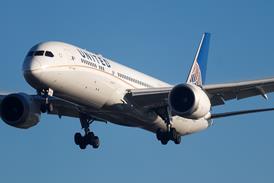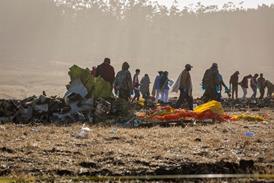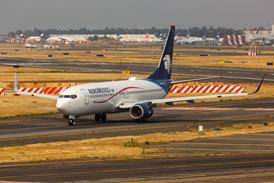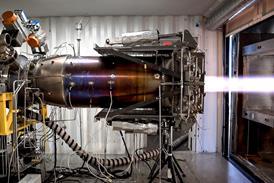The US Army has successfully tested an autonomous uncrewed aerial vehicle (UAV) for battlefield resupply during live-fire exercises in the Hawaiian Islands.
The aircraft was a vertical take-off and landing platform called the G1 Gabriel – a multi-rotor type designed by California start-up Soaring, which describes itself as a developer of autonomous heavy-lift cargo drones.
Soaring says the G1 Gabriel is a multi-purpose, multi-payload UAV intended to provide a solution for logistics in contested environments.
During recent exercises in Hawaii simulating such a scenario, a G1 Gabriel supported ground troops with the army’s 25th Infantry Division, delivering ammunition and food during night live-fire drills on the island of Oahu.

Over three flights, a G1 Gabriel delivered 2,400 rounds of 7.62mm belted machine gun ammunition to an infantry platoon. Those three flights were completed within 16min from the time the initial call for resupply was received, according to Soaring.
The company revealed the milestone on 7 May at the 2024 Special Operations Forces Week conference in Tampa, Florida.
“Safe and expedient resupply capabilities are critical to mission success, especially in the dynamic environments faced by our service members,” says Soaring chief executive Daniel Trunfio. “Our innovative G1 UAS has successfully proven it is capable of addressing both elements to deliver advantage at the tactical edge.”
The Pentagon increasingly seeks to incorporate autonomous systems across all realms of combat operations, particularly as Washington pivots forces away from counterinsurgency campaigns of Iraq and Afghanistan.
In the shift back toward preparation for high-intensity “peer-on-peer” conflicts, military planners have come to the realisation that many of their aircraft and personnel have become highly vulnerable to the latest precision munitions, air defence networks and cheap swarms of drones.
Functions like battlefield resupply, which could previously be reliably accomplished via helicopter, are suddenly high-risk operations in contested environments. Autonomous platforms like the G1 Gabriel offer a potential low-risk solution.
“The army is working to identify a reliable, autonomous alternative for tactical resupply, to replenish mission-critical resources at the point of contact with the enemy, without risking lives,” says US Army Lieutenant Colonel Pete Walther, commander of the infantry forces involved in the recent live-fire training in Hawaii.
The Hawaii-based 25th Infantry Division, of which Walther’s troops are part, is among the Pentagon’s primary ground combat forces in the Indo-Pacific region. The soldiers have been tasked with developing techniques needed to fight and win in the dense jungle environments found across Southeast Asia and the Pacific islands.
“Our soldiers require resupply of water and ammunition to continue the fight, however lessons from the Ukraine conflict teach us that our current forms of tactical resupply will likely fail, especially in the Pacific region,” Walther says. “There is a real need for innovative low-risk resupply solutions critical to the success of the operation.”
Soaring says recent exercises with Walther’s battalion demonstrate the G1 Gabriel’s potential to resupply groups of 30-40 soldiers “faster and with less risk than ground vehicle-based resupply missions”.
While uncrewed aircraft have, over the past two decades, become essential capabilities for lethal strike and airborne reconnaissance, logistics support has largely remained within the realm of crewed aviation.
That is now changing.
In addition to the army’s experimentation with uncrewed resupply, the US Air Force is funding development of an autonomous light cargo aircraft by California start-up XWing. Additionally, the US Navy is testing autonomous UAVs for delivering supplies to ships at sea under its Blue Water Logistics Maritime UAS programme.























